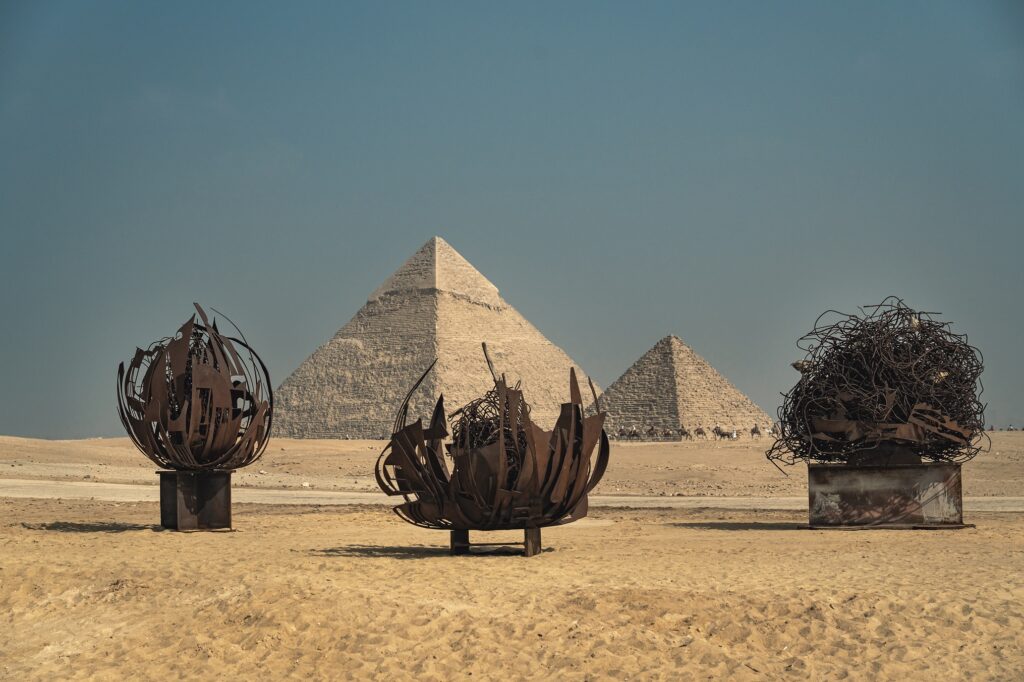Nadim Karam takes part in “Forever Is Now” at the Giza Pyramids | November 2025

Nadim Karam takes part in the Fifth “Forever Is Now” at the Giza Pyramids
Forever Is Now 5: At the Foot of the Pyramids, Ten Artists explore the Meaning of Forever
“Forever Is Now”, organized by “Art D’Égypte by Culturvator”, continues its role in building connectivity between contemporary art and ancient Egyptian history. Ten artists from ten countries showcase their own visions on eternity through works ranging from sculptures to art installations.
Nadim Karam’s Desert Flowers
Desert Flowers rises from the sands of the Giza Plateau, giving form to hidden, untold stories that resurface across time. Forged from recuperated scrap, the three sculptures echo Egypt’s history, and like the rebirth of the lotus, the work transforms discarded fragments into symbols of resilience and remembrance. Set against the pyramids, Desert Flowers invites reflection on how memory endures, how stories fade, and how new life continues to emerge.
Nadim Karam noted, “The ‘Desert Flowers’ emerges from the sands of the Giza Plateau, giving form to hidden and untold stories that quietly emanate from the depths of time.”
About the work:
Appearing like lotus flowers unfolding in the desert landscape, each flower holds a heart of hidden, untold stories, formed from scrap, while its petals bear patterns crafted from recuperated materials from Nadim Karam’s previous works. The installation reflects on how history, space, and time shape which narratives are preserved and which are forgotten.
A powerful symbol in ancient Egypt, the lotus represented the sun, rebirth, and creation—once abundant, it has now largely vanished from its native landscape. The three sculptures visually narrate the process of a lotus flower emerging from a bud. The first, SUN, remains rough, its petals still hidden in jagged metal scraps. The second, REBIRTH, begins to unfurl, symbolizing emergence. The third, CREATION, blooms fully.
In Egypt, history has been meticulously recorded in stone and script, yet many voices and events surely remain lost. Inspired by Egypt’s rich history, and more broadly, the history of the world, the installation meditates on how recorded narratives can coexist with unheard voices and cultural signifiers: The Desert Flowers transforms abandoned fragments into symbols of resilience, much like these lost stories that quietly persist beneath the surface.
Conceptually derived from Karam’s Stretching Thoughts, Neglected Thoughts, and Compressed Thoughts series- where discarded materials represent forgotten ideas and histories- the installation mirrors the unfolding of unspoken stories, reclaiming space in collective memory, thus suggesting that contemporary artistic voices can reawaken the layered cultural markers and history of a space.
Photo credit: Enrico di Leo